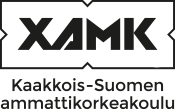Enterprise resource planning (5 cr)
Code: LO00CP85-3001
General information
Enrollment
02.01.2019 - 14.01.2019
Timing
01.01.2019 - 28.04.2019
Number of ECTS credits allocated
5 op
Mode of delivery
Contact teaching
Unit
Department of Logistics and Marine Technology
Campus
Kotka Campus
Teaching languages
- Finnish
Degree programmes
- Degree Programme in Logistics
Teachers
- Tuula Kuparinen
Teacher in charge
Tuula Kuparinen
Groups
-
LOKT17SP
Objective
You are familiar with the most important operating principles of ERP systems and understand the benefits they bring to business.
You know the most important ERP suppliers and are familiar with the key features of their products.
You have the competence to offer expert opinions in projects aiming at selecting and commissioning ERP systems.
You are able to use the basic functions of an ERP system.
You are able to search for data in from various sources, critically assess the reliability of sources and data, and process digital data.
You are able to use appropriate means, technologies and channels of communication in teamwork, and follow the business code of conduct in electronic communication.
You know how the ERP systems improve supply chain management.
Content
What are the most important operating principles of ERP systems?
What are the benefits of well-implemented ERP systems and what are the main challenges?
Who are the most important ERP suppliers and how do their products differ from each other?
What are the success factors in ERP implementation?
How are SAP systems operated?
How are different kinds of data sources used, and how is the reliability of data and sources critically assessed, and how is digital data processed?
How are appropriate means, technologies and channels of communication used in teamwork, and how is the business code of conduct followed in electronic communication?
How do ERP systems improve supply chain management?
Location and time
The student can take the course together with an older study group.
Materials
Material in Moodle, other material will be informed in the beginning of the course.
Teaching methods
Scheduled track:
The student proceeds according the time table.
Independent track:
The student can make the course assignment for his/her own employer if the company´s processess are equal to the assignments content
Blended track:
The student can take the course together with an older study group.
Completion alternatives
The student can make the course assignment for his/her own employer if the company´s processess are equal to the assignments content
Student workload
The student´s work load is about 135 h in average.
Further information
tuula.kuparinen@xamk.fi
Evaluation scale
1-5
Assessment methods and criteria
The assessment is based on Moodle exams, course assignment and presence in lectures.
Assessment criteria, fail (0)
The student does not get accectable grade for all parts of assessment.
Assessment criteria, satisfactory (1-2)
The student gets 50 - 69 % of the maximum grade.
Assessment criteria, good (3-4)
The student gets 70 - 89 % of the maximum grade.
Assessment criteria, excellent (5)
The student gets 90 - 100 % of the maximum grade.
